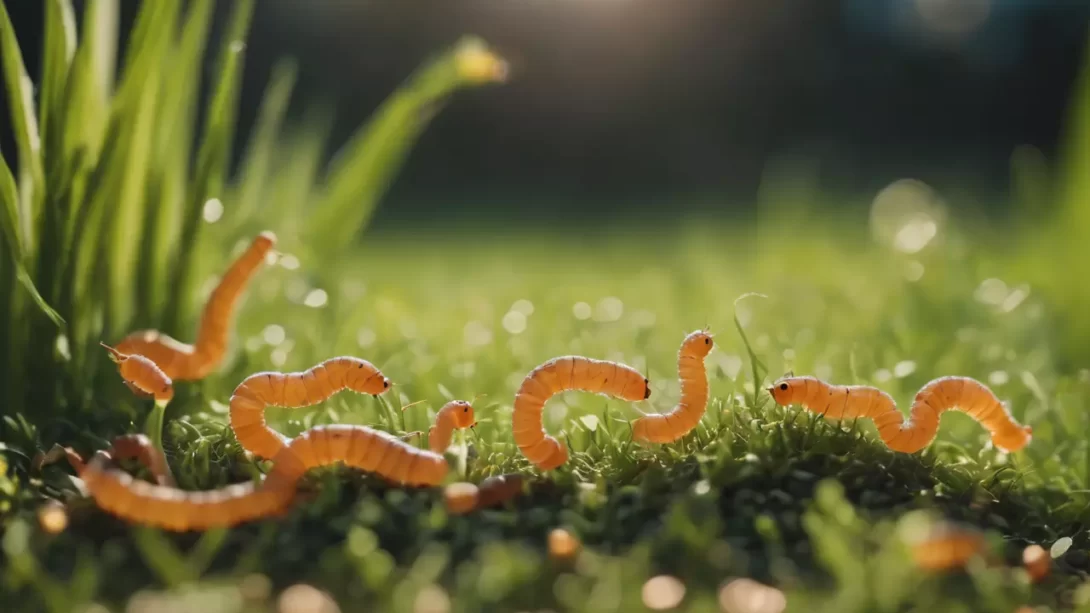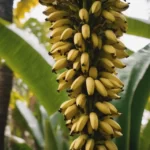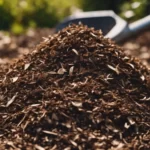Lawn worms are a common and often misunderstood component of garden ecosystems. These creatures, living beneath the surface of our lawns, play a critical role in soil health and plant growth. However, not all worms are beneficial, and understanding their different types can help gardeners manage their lawns effectively. This article explores the various types of worms found in lawns, their roles, and how they can either benefit or harm your garden.
Types of Lawn Worms
One of the most beneficial types of lawn worms is the earthworm. These creatures are essential for soil health, aiding in aeration and nutrient cycling. They consume organic matter, breaking it down and releasing vital nutrients back into the soil, which supports plant growth. Earthworms also create channels in the soil, improving air and water flow, crucial for healthy lawns.
Cutworms are another type of worm commonly found in lawns, but unlike earthworms, they can be quite destructive. These worms are the larvae of certain moth species and are known for their habit of cutting through the stems of grass and seedlings at the soil level, which can cause significant damage to lawns and young plants.
Armyworms, similar to cutworms, are the larvae of moths and can be detrimental to lawn health. These pests feed on grass leaves, often in large numbers, creating patches of damaged or dead grass. They get their name from their behavior of moving across lawns in large groups, like an army, consuming almost all the grass in their path.
The Ecological Benefits of Earthworms
The presence of earthworms in a lawn is often a sign of healthy soil. These worms play a vital role in aerating the soil, a process that allows air, water, and nutrients to penetrate deeper into the ground, reaching the roots of plants. This aeration is essential for robust root development and overall plant health.
Earthworms also contribute significantly to nutrient recycling in the soil. As they consume organic matter, such as fallen leaves and dead roots, they break it down and release nutrients like nitrogen, phosphorus, and potassium, which are crucial for plant growth. This natural process reduces the need for chemical fertilizers, making earthworms invaluable allies in maintaining a healthy, sustainable garden.
The Destructive Nature of Some Worm Species
While earthworms are beneficial, not all lawn worms have a positive impact. Cutworms and armyworms can be particularly problematic. These pests feed on the stems and leaves of grass, leading to brown patches and thinning turf. Cutworms tend to feed at night, cutting young plants at the base, which can be devastating for newly seeded lawns. Armyworms, on the other hand, eat the grass blades, often leaving behind only the stubble.
The signs of an infestation by these harmful worms include irregular patches of brown or dying grass, and in severe cases, the lawn may appear scalped. The damage can be extensive, especially if the infestation is not managed promptly. It’s important for gardeners to be able to identify these signs early to take appropriate action.
Managing Lawn Worm Populations
Effective lawn worm management involves encouraging beneficial species like earthworms while controlling harmful ones. One of the best ways to promote a healthy population of earthworms is to maintain organic matter in the soil. This can be done by leaving grass clippings on the lawn, which decompose and provide food for the worms.
For controlling harmful species like cutworms and armyworms, natural and environmentally friendly methods are preferred. Introducing natural predators, such as birds, can help keep these pest populations in check. Additionally, practicing good lawn care, like proper watering and mowing, can strengthen the lawn, making it less susceptible to infestations.
It’s also essential to use pesticides judiciously. Overuse of chemicals can harm beneficial organisms like earthworms and can lead to a host of other environmental problems. If chemical control is necessary, it should be targeted and used as a last resort, following the guidelines for safe and effective application.
The Role of Lawn Worms in the Larger Ecosystem
Lawn worms, both beneficial and harmful, play a significant role in the larger ecosystem. Earthworms, in particular, contribute to soil health and biodiversity. Their activities help create a more hospitable environment for other soil-dwelling organisms, which in turn supports a diverse range of plant and animal life.
These worms also play a part in the food web. Many bird species, for example, rely on worms as a food source. The presence of a healthy worm population can attract a variety of birds, contributing to ecological diversity and balance in your garden. This interaction highlights the interconnectedness of all living organisms in a garden ecosystem.
Conclusion
Lawn worms are a diverse group with varying impacts on garden health. While earthworms are beneficial for soil health and overall garden vitality, species like cutworms and armyworms can pose significant challenges. Effective garden management involves encouraging beneficial worms while controlling the harmful ones, ideally through natural and environmentally friendly methods.
Understanding the role of these worms in the larger ecosystem is crucial. It allows gardeners to appreciate the importance of biodiversity and the interconnected nature of garden life. By adopting practices that support a healthy balance, gardeners can enjoy lush, vibrant lawns that are both beautiful and ecologically sound.




